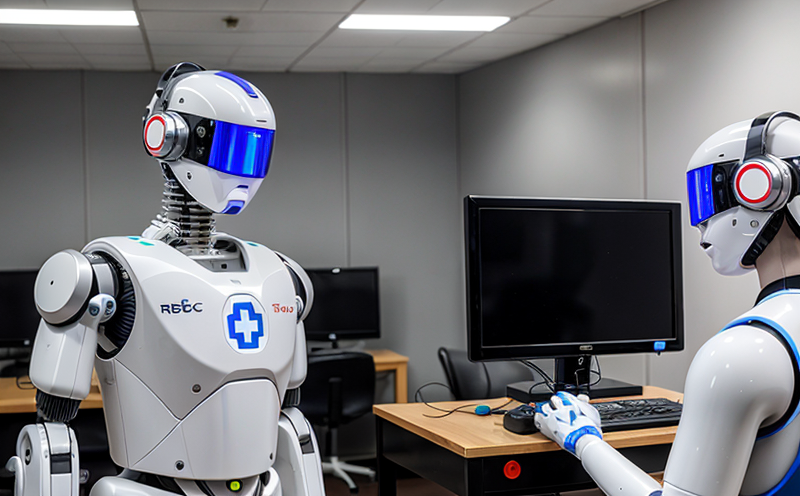ISO 62366 Usability Engineering for Medical Robots
The International Organization for Standardization (ISO) standard ISO 62366: Usability Engineering for Medical Devices is pivotal in ensuring that medical robots are not only effective but also safe and user-friendly. This standard applies to the design, development, manufacturing, and testing phases of medical robotic systems used in healthcare settings. It emphasizes the importance of usability engineering as a key factor in improving patient safety, reducing errors, enhancing treatment outcomes, and increasing overall satisfaction.
Usability is defined by ISO 62366 as "the extent to which a user can complete tasks efficiently and effectively," encompassing aspects such as learnability, efficiency, memorability, error prevention, and user satisfaction. In the context of medical robotics, this means ensuring that robotic systems are easy for healthcare professionals to operate, maintain, and troubleshoot while delivering consistent performance under various conditions.
The standard outlines a structured approach to usability engineering, which begins with identifying user needs and ends with post-market surveillance. This lifecycle includes:
- Requirement analysis
- User research and design
- User testing
- Usability evaluation
- Validation and verification
- Post-market monitoring
These steps ensure that the final product is not only technologically advanced but also intuitive, which is crucial in a field where precision and efficiency are paramount. The standard provides guidelines for each stage to help manufacturers adhere to best practices and regulatory requirements.
The implementation of ISO 62366 can significantly impact the design process, leading to more robust and user-centered medical robots. By focusing on usability early in the development cycle, manufacturers can identify potential issues before they become costly problems later. This proactive approach also enhances product reliability, reduces defects, and improves overall quality.
Moreover, compliance with ISO 62366 is essential for regulatory approval and market entry. Many countries have adopted or reference this standard in their regulations, making it a critical factor for manufacturers aiming to penetrate international markets. Compliance can provide a competitive advantage by demonstrating a commitment to safety and innovation, which can help build trust with healthcare providers and patients.
In summary, ISO 62366 serves as a comprehensive framework for ensuring that medical robots are designed with usability in mind from the outset. This approach not only enhances patient care but also supports broader goals of reducing healthcare costs and improving outcomes through more effective and efficient treatment methods.
Applied Standards
ISO 62366 is part of a series of standards related to usability engineering for medical devices, which includes:
- ISO 9241-110: Ergonomics of human-system interaction—Part 110: Usability
- ISO 13485: Medical Devices—Quality Management Systems
- IEC 62366-1: Application Part of ISO 62366: Usability Engineering for Medical Devices and Related Products
The application part, IEC 62366-1, provides detailed guidance on how to apply the principles of usability engineering in medical device development. These standards work together to provide a holistic approach to ensuring that medical devices, including robots, are safe, effective, and user-friendly.
Compliance with these standards is not only beneficial for meeting regulatory requirements but also for enhancing product design and performance. By adhering to these guidelines, manufacturers can ensure that their products meet the highest standards of usability and safety.
Customer Impact and Satisfaction
The implementation of ISO 62366 has a direct impact on customer satisfaction, particularly in healthcare settings where medical robots are used. By focusing on usability engineering, manufacturers can ensure that their products are easy to operate and maintain, reducing the learning curve for healthcare professionals. This, in turn, leads to more efficient workflows and better patient outcomes.
- Improved Efficiency: Usability improvements lead to faster and more accurate procedures, which can reduce treatment times and improve overall efficiency.
- Better Patient Outcomes: User-friendly design ensures that medical robots are used correctly, reducing the risk of errors and enhancing treatment effectiveness.
- Increased Satisfaction: Healthcare providers report higher levels of satisfaction with products that meet usability standards, leading to better collaboration between manufacturers and healthcare institutions.
- Enhanced Reputation: Compliance with ISO 62366 can enhance a manufacturer's reputation for quality and innovation, which is crucial in the competitive medical device market.
These benefits are not only felt by end-users but also extend to regulatory bodies. The standard helps streamline the approval process by providing clear guidelines that reduce ambiguity and ensure consistency across different jurisdictions.
In conclusion, ISO 62366 plays a vital role in enhancing the usability of medical robots, ultimately leading to better healthcare outcomes and higher levels of customer satisfaction.
Competitive Advantage and Market Impact
Adhering to ISO 62366 can provide significant competitive advantages for manufacturers. By demonstrating a commitment to safety and usability, companies can differentiate themselves in the market, attracting healthcare providers who prioritize quality and innovation.
The standard helps ensure that products meet regulatory requirements, which is essential for gaining approval and entering new markets. Many countries have adopted or reference ISO 62366 in their regulations, making compliance a necessity for manufacturers aiming to penetrate international markets.
In addition to regulatory compliance, adherence to this standard can also lead to cost savings by reducing the need for post-market recalls and repairs. By addressing usability issues early in the development process, manufacturers can minimize risks and improve product reliability, ultimately leading to higher customer satisfaction and loyalty.
The global market for medical robots is expected to grow significantly over the next few years, driven by increasing demand for advanced surgical tools and therapies. Manufacturers who comply with ISO 62366 will be well-positioned to capitalize on this growth opportunity, as they can offer products that are not only technologically advanced but also user-friendly.
In summary, compliance with ISO 62366 provides a competitive edge in the medical device market by enhancing product quality and usability while ensuring regulatory compliance. This approach helps manufacturers meet the evolving needs of healthcare providers and patients, ultimately leading to greater success in both domestic and international markets.





